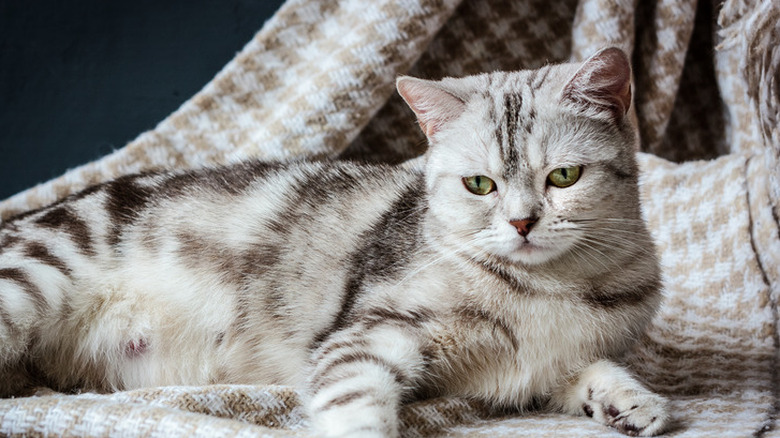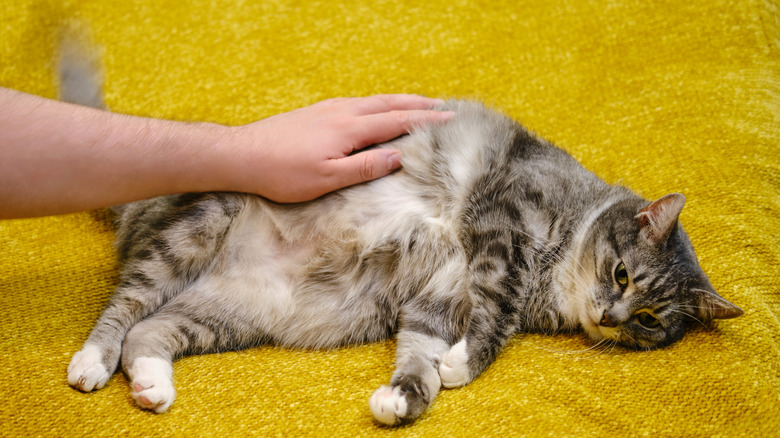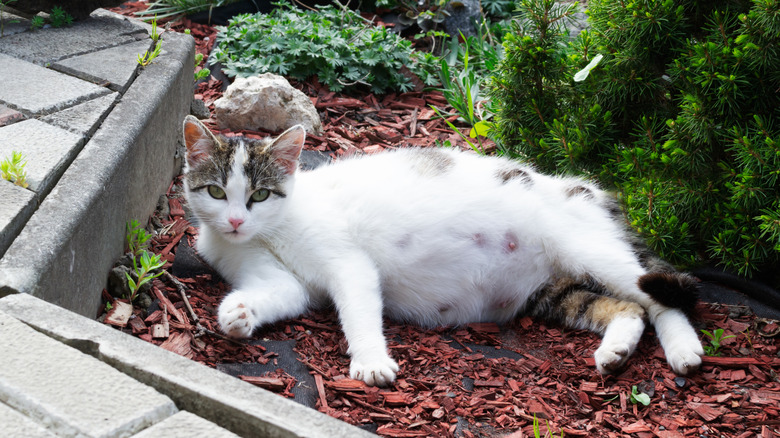What Are The Signs To Look For Right Before A Cat Is Ready To Give Birth To Her Kittens?
Is there anything more irresistible than a kitten? If you have a pregnant cat, she'll soon be a momma cat, and you'll have a front row seat to her kittens' adorable and hilarious antics. But for now, you need to make sure your home is in order for the little ones' arrival.
A female cat that is unspayed, known as a queen, will typically gestate for 60 to 67 days. On the average, a cat gestation period is 63 to 65 days. This means you have barely two months to prepare for your cat's pregnancy. After you stock up on everything you need to buy for your new kittens, be on the lookout for these signs your mother cat is ready to give birth.
Cat pregnancy timeline
Purina says your cat will likely not show cat pregnancy symptoms until she is at least two or three weeks into her pregnancy. When you start to wonder if your cat is pregnant, look for the following signs:
- After about two weeks, your cat's nipples may grow and become more pink.
- Early on in pregnancy, you may notice that your female cat is vomiting. This may be a reaction similar to morning sickness in humans.
- Eventually, your cat's abdomen will enlarge as the kittens inside of her start to grow. Be careful when touching her there so the kittens aren't damaged. If you see abdominal swelling and you don't think your cat is pregnant, get her checked out by a vet.
- She will slowly increase her weight as the pregnancy progresses, and will have an increase in appetite.
- As time goes on, she may want more affection from you.
Behavioral changes to look for
When your cat is nearing the day when her kittens will be born, her behavior will change. Pregnant cat behavior is noticeably different than normal cat behavior. She may appear to be "pacing," or, in other words, acting restless. While she may have had a hearty appetite up to now, Purina says to look for signs such as her refusing food.
She may start exploring the house or yard looking for a safe place to start nesting in preparation for the labor and delivery. As labor becomes more imminent, she may meow and cry more as her discomfort increases. She may also groom herself much more than normal.
Eventually, she'll choose to settle down and you'll likely notice strong abdominal contractions along with some discharge from her vagina. Her kittens are on the way!
Signs of Labor
AnimalWise MD says that your cat may lose her mucous plug between three and seven days before the kittens are born. If you notice that your cat has lost her mucous plug but she has not yet given birth within seven days, have her checked out by a vet. Likewise, it is recommended to get a vet involved if you see a greenish discharge and still no kittens.
According to VCA Hospitals, there are three stages of cat labor. Pregnant cat labor signs will not generally start until your cat is close to being ready to give birth.
First stage labor
During the first stage, the cervix and vagina will start to relax in preparation for the kittens passing through. The uterus may begin contracting occasionally during this time, although they will not be visibly dramatic and difficult contractions just yet. If your cat is still comfortable walking around, she may go back and forth between visiting you and her nest. During a young cat's first litter, this first stage may last up to 35 hours.
Second stage labor
It is during the second stage of labor that the contractions become stronger and more frequent. During this time your cat's water will break. This signals that the head of the first kitten to be delivered is moving into place and is starting to put some pressure on the pelvis. It is at this time that your cat may begin to appear to be straining.
Third stage labor
When the third stage begins, the kittens will be coming soon. This is when the kittens will begin to be born. It may take a while for each kitten to be born. It could happen quickly, as often as 10 minutes per kitten, or take as long as an hour in between. Always check with your veterinarian if you're unsure about whether your cat is in labor.


